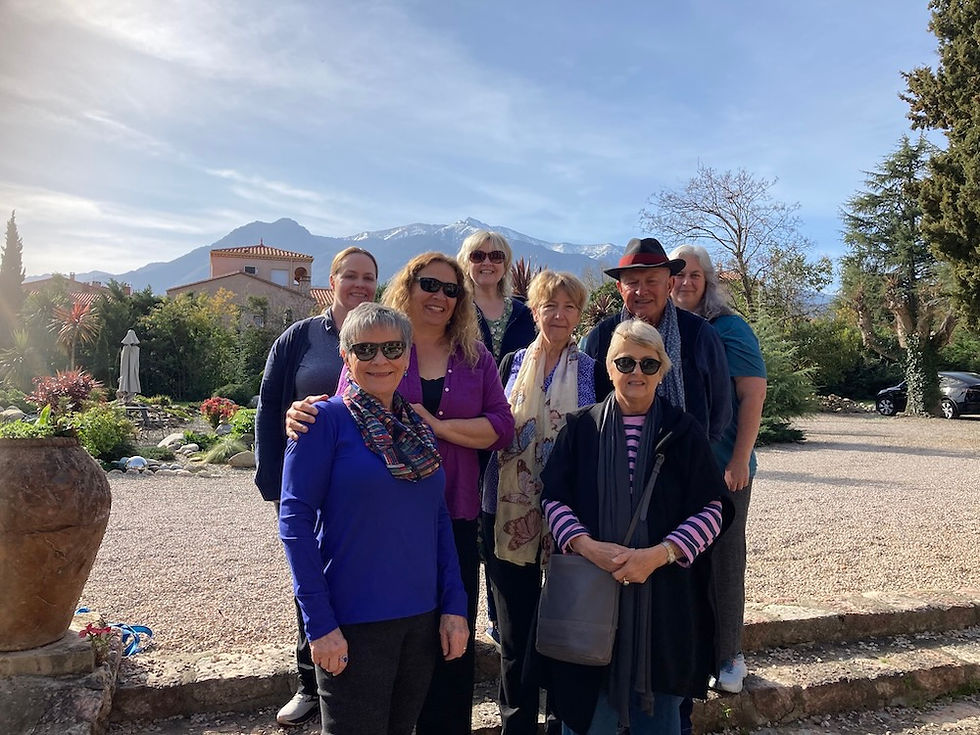John of the Wind and Sea
- columbiahillen

- Aug 3, 2016
- 3 min read
An integral element of ‘Ireland Writing Retreat’ is immersing participants in the unique charm and age-less beauty of the local landscape, allowing it to play the role of the inspirational muse, testing, tempting, teasing out the best of creative writing talent lying within. Below is a vivid descriptive piece – both delightful and enticing in its philosophical nuances - written by New Hampshire-based Susan Bartlett, a participant at this year’s writing retreat, following a boat trip to Gola Island off the coast of northwestern Donegal in July.
John of the Wind and Sea
by Susan Bartlett (realistic fiction)
Gola Island is everything you can see about Ireland’s North Atlantic Way, only more so, much more. There is the granite coast with sweeping cliffs to the north, ancient bogs, and crescents of white sand on the leeward side. And yet, there is a way in which an island consolidates its character and becomes, not just an outpost of the main shore, but its own universe. And Gola’s universe is an honest one. It tilts its broad open face to the sky and accepts all that comes. As we say back home, on Gola “what you see is what you get.”
Part of this honesty is seen through the archeology of the place, how much of it is above ground and available for anyone to inspect. There are the houses, those clearly abandoned in at least three migrations, visible in the relative state of decay. With some, the roofs have fallen long ago, and exposed to wind and rain, much of the plaster and any sign of refinement one might find comforting are gone. In others, some roofing remains and underneath, blue painted walls, mantled hearths and slate flooring. Sheep droppings litter the floors, for on Gola the sheep wander and shelter at will, the ocean serving for a fence. In one house abandoned 40 years or so ago, there are signs of vagabondage: a rude kitchen set up from scavenged debris, crates for tables and chairs, white, gold and green plastic plates tacked to the wall to cover a crack and also show a bit of national pride.
Across the yard from this derelict, there is a yellow house. This one is intact and it seems to have grown out of the ruin of its neighbor, sharing one solid wall with the abandoned one. More than intact, the house looks like it must be inhabited for some part of the year. The yard is clear of wild growth and small, uniform oval rocks that must represent years of collecting form a patio. The windows look remarkably clean and uniformly black, what seems to be a sure sign of care. But as one draws closer, it becomes apparent that they are covered with plywood painted to look just like a window, with white frames and grilles and black paint for the glass. The ruse makes the little house look like a child’s painting and adds to the guileless nature of the place. Tucked amongst these relics and newish houses are caravans, what we would call “trailers” back home, mostly settled into the overgrowth.
The day we cross over to Gola, there doesn’t seem to be anybody about. But we head off into the center of the island, still on the leeward side, and discover a tiny café, a shed, really, but with a porch providing shelter for plastic tables and chairs. Inside, Eddie Joe pours tea. The shelves hold a few small bags of crisps and energy bars, and the tiny propane fridge has several kinds of ice cream, which seems incongruous in this cold, wet day. The back wall of the shed is covered with photos from years past. Handsome young men and women stand in front of fishing boats, or sit on the steps of a school. They are wearing the styles of the 1950s and 60s, clearly the last era in which there was a vibrant community here. Eddie Joe, himself was the last child to graduate from the tiny elementary school on Gola before it closed.
For all its air of abandonment of the old and vacancy of the new, there is a freshness to Gola, a sense of anticipation, rather than despair, a sense that all will continue on, regardless.












Comments